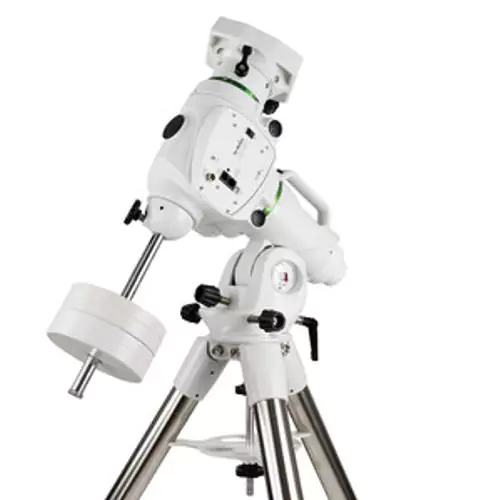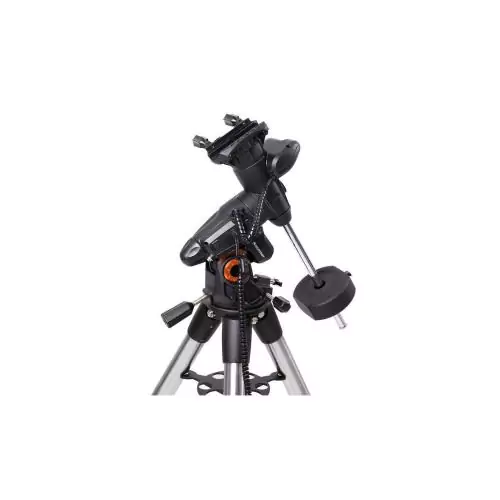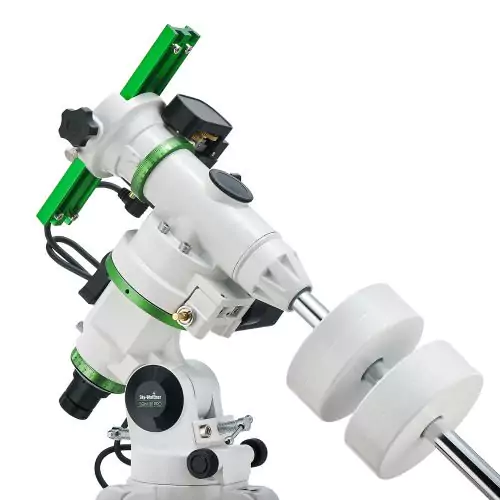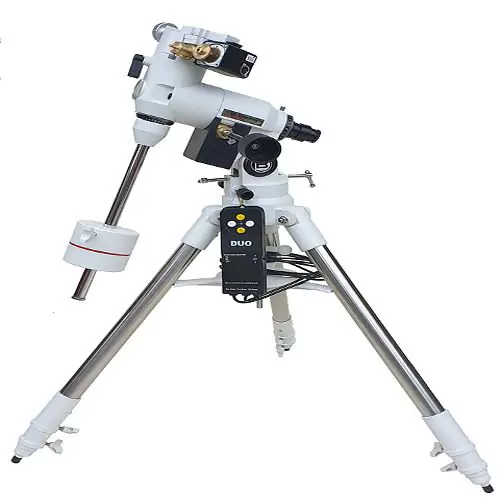Best Go-to Mount for Astrophotography
Capturing the wonder of the cosmos through a lens requires patience, precision, and a touch of magic. Central to the art of astrophotography is a reliable mount, as it dictates the tracking capabilities necessary for long-exposure shots of celestial objects. But with a stellar constellation of options available, which mount should be your go-to for those nights under the stars? In this detailed exploration, we will uncover the best astrophotography mounts that can take your starry images to new heights.
Astrophotography is a specialized form of photography that intricately combines technological precision with the art of celestial observation. A crucial element in the astrophotographer’s toolkit is the mount, which serves as the foundation for your telescope and ensures that it tracks the stars accurately, allowing for those impressive, crystal-clear images of the night sky.
An Overview of Astrophotography Mounts
Types of Mounts
In the realm of astrophotography, two primary types of mounts reign supreme: equatorial and alt-azimuth.
Equatorial Mounts
Equatorial mounts are designed to align with the Earth’s axis, which is essential in tracking stars as they seemingly traverse the dome of the sky. These mounts are known for their ability to counteract Earth’s rotation, a must for capturing crisp images of deep-sky objects. With the best equatorial mount, you can achieve superior sharp images. We’ll discuss the details further below. The choice is yours
Alt-Azimuth Mounts
Alt-azimuth mounts, while simpler in design, can be more user-friendly, particularly for beginners. They move across altitude (up and down) and azimuth (left and right) axes independently, suitable for terrestrial viewing as well as basic astronomical observations.
Key Features to Consider: while choosing astrophotography mount
Purchasing an astrophotography mount is a significant investment, so it’s vital to consider the following features before making your choice.
Tracking Accuracy
The mount’s ability to track celestial objects with precision is non-negotiable. Look for mounts with high-quality gearing systems and precision tracking motors.
Payload Capacity
The weight of your telescope and any additional equipment, such as guide scopes or camera gear, must be well within the mount’s payload capacity to avoid strain and tracking issues.
Portability
The balance between stability and portability is an important factor, especially for photographers who love to take their equipment to remote star-gazing locations.
Top Picks for Astrophotography Mounts
Astrophotography makes it possible to capture stunning images of celestial objects, such as majestic galaxies and wispy nebulae. But without a sturdy and precise mount, those dreams of capturing deep space wonders can quickly become blurry disappointments. The suitable mount is the backbone of your astrophotography setup, providing a stable platform that tracks the stars as they move across the night sky. In this guide, we’ll explore the top picks for astrophotography mounts, helping you find the perfect one to elevate your cosmic photography adventures.

Sky Watcher EQ6-R GoTo SyncScan Equatorial Mount
The Sky Watcher EQ6-R Go-To Sync-Scan Equatorial Mount is a motorized telescope mount designed for both visual observation and astrophotography. It’s a good option for serious astronomy enthusiasts.
Pros
- Impressive load capacity
- Accurate tracking
- Good performance in wind
Cons
- Difficulty in leveling and balancing
- Heavy Item (92.4 lbs)
The Sky Watcher EQ6-R Go-To Sync-Scan Equatorial Mount is like a super strong and smart robot for telescopes. It can carry really heavy telescopes, up to 44 pounds! That’s perfect for medium-sized ones. It’s great for taking pictures of stars and galaxies because it moves very precisely and quietly. With its special Go-To system, you can easily find things in the sky without getting lost. Whether you’re a pro or just love looking at the stars, this mount is a top pick.
BEST FEATURES
- Belt Drives
- Whisper-Quiet
- Slewing Speed
- Heavy-Duty Adjustments
- 44-pound Payload

Celestron Advanced VX Computerized Mount
The Celestron Advanced VX Computerized Mount strikes a balance between affordability, portability, and functionality, making it a great choice for mid-range astronomy hobbyists. It offers many features found on Celestron’s more advanced German equatorial mounts, but at a more accessible price point.
Pros
- User-friendly
- Capable Payload
- Extensive Object Database
- Sturdy Build
Cons
- Limited payload
- Heavy weight
The Celestron Advanced VX Computerized Mount is great for people who are just starting out or know a bit about astronomy already. It can hold telescopes up to 30 pounds, which is pretty good. This mount is like having a smart helper because it knows about lots of things in the sky, over 40,000 of them! It’s easy to use with simple buttons, and you can tell it where to go and it takes you there. Plus, it’s strong and steady, so you can watch stars and planets smoothly without them jumping around too much.
Best Feature
- User friendly
- Go to system

Sky Watcher EQM-35 – Fully Computerized GoTo
The Sky Watcher EQM-35 is a computerized telescope mount ideal for beginners interested in astrophotography or wanting a stable platform for visual observation.
Pros
- Stable mount for astrophotography
- Accurate tracking with GOTO system
- Solid build quality
- Easy to use once set up
- Affordable for the performance
- Handles moderate payload well
- Good performance
Cons
- Polar alignment can be challenging
- Issues with electronics and firmware
- Overpowering polar alignment reticle
- Heavy Payload Capacity
The EQM-35 mount is like a helpful friend for people who love looking at the stars or taking pictures of them. It’s perfect if you’re just starting out or want something light to carry. It can hold telescopes up to 22 pounds, which is pretty good for its size. This mount is easy to use and has a special system to help you find things in the sky. It also has a built-in tool to make sure your telescope is pointing in the right direction. You can even take off part of it to turn it into a strong system for taking wide pictures of the sky with a regular camera. It’s like having two mounts in one.
Best Features
- Modular Design
- All-Metal Construction
- 42,000+ Object Database180-Tooth RA Gear

Besser Messier EXOS-2 EQ-5 GoTo Equatorial Mount
The Bresser Messier EXOS-2 EQ-5 Go-To Equatorial Mount is a good mid-range option for astronomy enthusiasts. It offers a balance between capability and affordability, making it suitable for both visual observing and astrophotography.
Pros
- Good price
- Solid build
- Acceptable capacity
- Included polar scope
- Autoguider present
Cons
- Poor polar scope adjustment
- Requires 8 D Batteries
The Besser Messier EXOS-2 mount is great if you’re just starting out or want something in the middle range. It can hold telescopes up to 30 pounds, so you’ve got some options there. This mount comes with a handy controller that’s easy to use, and it knows about lots of things in the sky to help you find them. It’s like having a tour guide for the stars! Whether you’re just looking or taking pictures, this mount is a good all-around choice.
Best Features
- High Bearing Capacity
- Precise Tracking
- GoTo System
- Over 100,000 Objects Database
Comparative Analysis
To truly understand which mount will suit your needs best, a comparison is in order. Here’s how our top picks stack up against each other based on performance, price, and use cases.
| Feature | Sky Watcher EQ6-R GoTo SyncScan | Celestron Advanced VX | Sky Watcher EQM-35 | Besser Messier EXOS-2 |
|---|---|---|---|---|
| Performance | Highest | High | Medium | Medium |
| Payload Capacity | 44 lbs (20kg) | 33 lbs (15kg) | 22 lbs (10kg) | 30 lbs (13.6kg) |
| GoTo Accuracy | Very Accurate | Accurate | Accurate | Accurate |
| Tracking Accuracy | Excellent | Very Good | Good | Good |
| Periodic Error Correction | Yes (PPEC) | Yes | Yes | Yes |
Expert Insights and Recommendations
We reached out to astrophotography experts for their perspective on selecting the right mount. Most recommend prioritizing tracking accuracy and durability, two factors critical to long-exposure photography. Some also suggest investing in high-quality polar scopes for manual alignment.
Tips for Optimizing Mount Usage
Leading astrophotographers offer invaluable tips to make the most of your mount:
Balance Your Load Correctly
Properly balance your telescope on the mount to prevent undue strain on the motor and gearbox.
Regular Maintenance
Carry out regular maintenance on your mount, particularly the lubrication of gears, to ensure smooth and precise tracking.
Practice Patience
Astrophotography is a discipline that rewards patience. Take the time to learn your mount and the night sky, and practice to hone your skills.
Telescopetrove
Conclusion
A reliable mount is the unsung hero of astrophotography, and selecting the right one is a decision not to be taken lightly. Our exploration of the best go-to mounts in this blog post has aimed to guide you towards an informed choice. Where will your astrophotography adventures take you next, and which mount will be by your side to capture the stunning beauty of the universe? Tell us stories behind your most memorable celestial captures. Your next breathtaking image might just be a mount away!
faqs
What is a Go-To mount, and why is it useful for astrophotography?
A Go-To mount automatically locates and tracks celestial objects. It uses motors and a built-in database to move the telescope with accuracy. This helps beginners and pros find targets fast and take longer, sharper exposures without star trails.
What type of Go-To mount is best for deep-sky astrophotography?
An equatorial Go-To mount is best for deep-sky imaging. It aligns with Earth’s rotation and allows precise tracking. This reduces field rotation, making it ideal for capturing galaxies, nebulae, and star clusters.
Are Go-To mounts suitable for beginners in astrophotography?
Yes, Go-To mounts are great for beginners. They remove the need for manual star-hopping. With just a simple alignment process, even first-time users can start imaging popular night-sky objects easily.
What features should I look for in a Go-To mount?
Look for a strong payload capacity, smooth tracking, low periodic error, and compatibility with guiding systems. Built-in polar alignment tools and app control also add convenience.
Can I use a Go-To mount with a DSLR camera?
Absolutely! Many Go-To mounts can support DSLR cameras with a lens or small telescope. Just make sure the weight doesn’t exceed the mount’s capacity. You’ll also get better results using a field flattener or guide scope.


